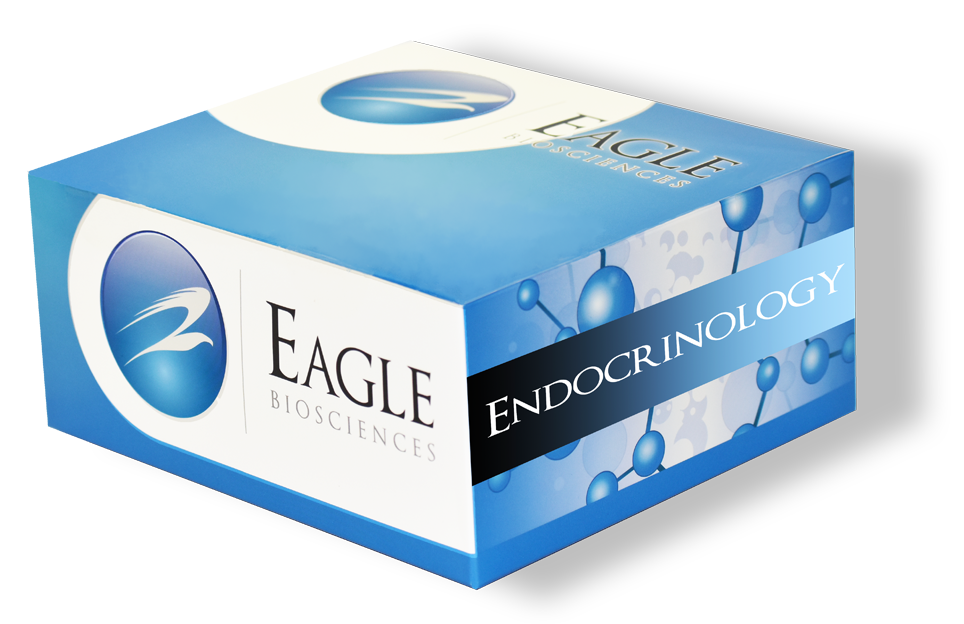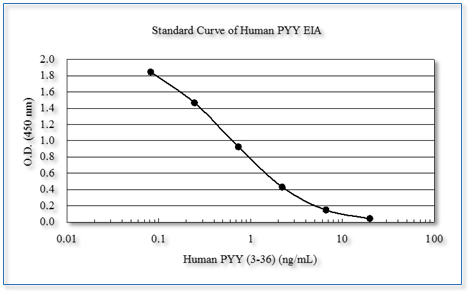Human PYY ELISA Assay
The Human PYY ELISA Assay is For Research Use Only
Size: 1×96 wells
Dynamic Range: 0.082 – 20 ng/mL
Incubation Time: 24 hours
Sample Type: Serum, Plasma
Sample Size: 50 μL
Alternative Name: Peptide YY
Assay Background
This Human PYY ELISA is an enzyme immunoassay (EIA) kit and is a stable and convenient assay system for human peptide YY (PYY). PYY was isolated initially by Tatemoto et al. (1980) from the extract of pig duodenum and shown to be a polypeptide consisting of 36 amino acids residues. PYY is homologous to pancreatic polypeptide (PP) and neuropeptide Y (NPY). PYY is localized mainly in endocrine cells in the intestine (ileum, colon, and rectum). PYY shows an inhibitory action on contraction of the gastrointestinal tract and on secretion of pancreatic and gastric juice. PYY is released by taking diet. The PYY level in human blood decreases after resection of the intestine, possibly be due to the decrease in number of the endocrine cells secreting PYY. The Human PYY ELISA Assay kit is prepared by using synthetic human PYY (3-36) as standard and biotinylated human PYY (3-36) as labeled antigen. The kit can be used for measurement of PYY [both PYY (3-36) and PYY (1-36)] in human serum or plasma with high sensitivity. It will be a specifically useful tool for PYY research.
Related Products
Human GLP-2 ELISA Assay Kit
Human GIP (Active) ELISA Assay Kit



